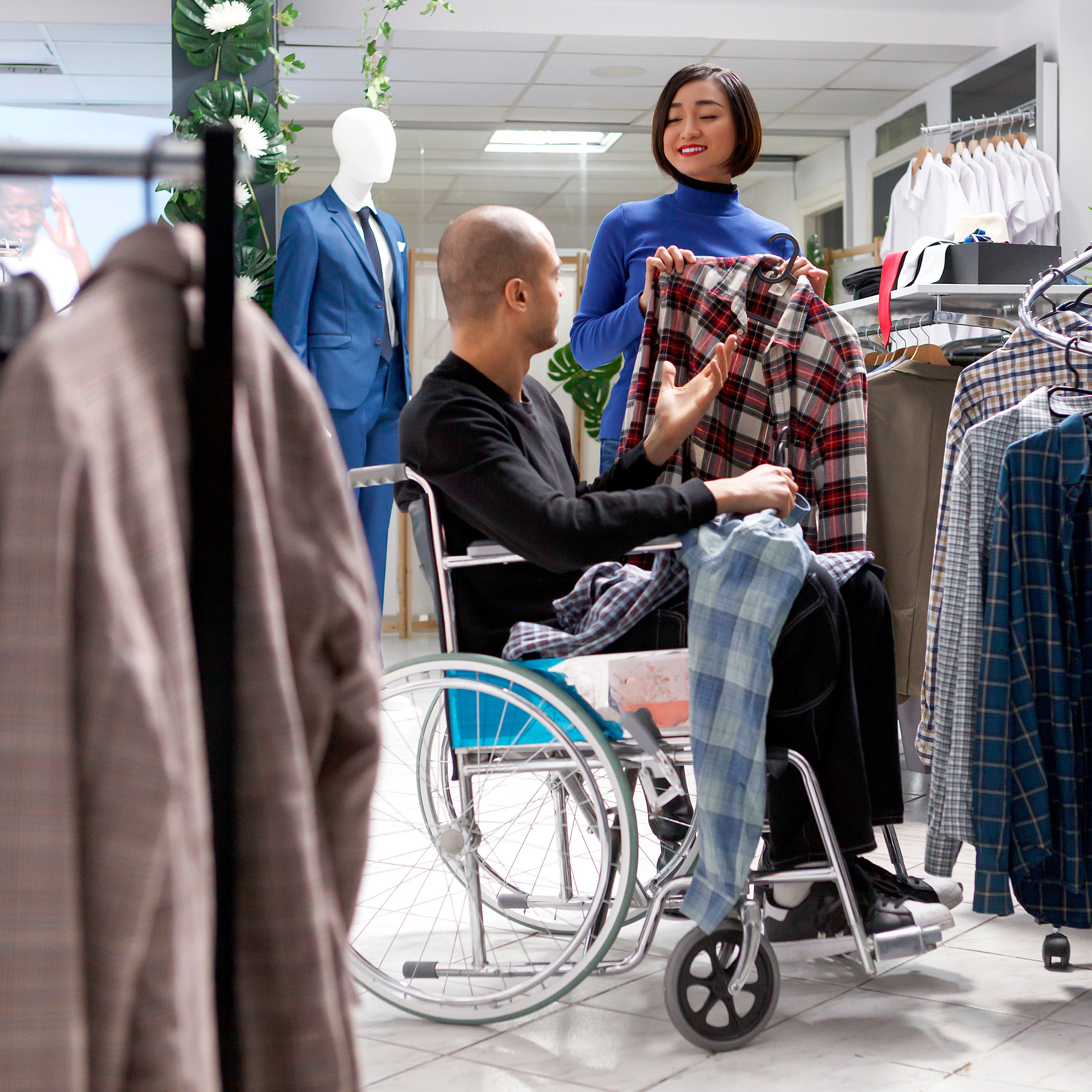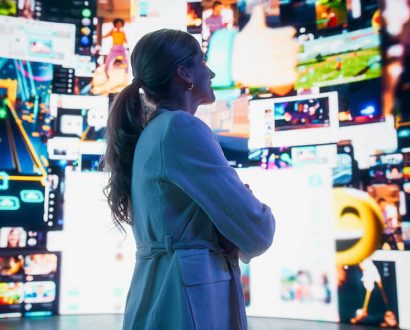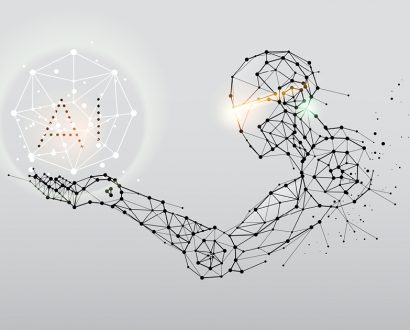At Cannes Lions this year, I watched the advertising industry grapple with an uncomfortable truth: 16 percent of the global population is disabled, yet only one percent of advertisements include disability. For CEOs navigating increasingly competitive markets, this 15 percent gap represents both a significant market failure and an unprecedented opportunity.
Some brands are already bridging this gap, and their success reveals exactly why authentic disability representation drives both cultural change and commercial advantage. The conversations I had during the festival revealed fundamental truths about what inclusive creativity really means and why it’s becoming essential for business success.
Rethinking disability from the ground up
One insight that kept surfacing was the fact that one of the biggest barriers to authentic representation lies in how we fundamentally think about disability itself.
During a panel discussion to launch the Nothing Without Us Awards, I emphasized what I believe is one of the most significant unlocks to bridging the 15 percent representation gap – stop thinking about disabled people as separate or other. Disability is a reality of the human condition that touches all of us and all of our core audiences. The disabled community is one any of us can join at any stage through accident, illness, diagnosis or simply as part of an aging population.
Understanding this reality makes it clear why authentic representation matters so much – and why accessibility in our industry spaces is fundamental to achieving it. It cannot be overlooked that this conversation was taking place at a festival that, like much of the industry it represents, is still working to improve its own accessibility.

One of the biggest barriers to authentic representation lies in how we fundamentally think about disability itself.
This year, we’re seeing positive momentum with Cannes Lions working alongside partners like Purple Goat agency to enhance accessibility for all festival attendees – partnerships that are vital because they ensure accessibility progress is driven by disabled expertise rather than assumptions.
“Cannes becomes the center of the marketing universe for a week every year, and so it becomes fundamentally important that we have the same commitment to accessibility and representation that we champion in media and advertising into the physical environment and delegate experience at the Lions festival,” explains Dom Hyams, who is leading the team from Purple Goat supporting the festival in making positive changes.
Representation and accessibility operate as cause and effect: Unless disabled people can access the spaces where decisions are made, how can we expect authentic representation in the work that emerges?
As festivals like Cannes Lions continue to enhance their accessibility alongside the brands and agencies they celebrate, we’re seeing how representation and accessibility reinforce each other. When disabled voices have greater access to industry events, they’re also better positioned to influence the creative processes that shape how disability is portrayed.
Creativity thrives on different perspectives
Our panel discussion revealed an important truth about what disability brings to creative processes. Keeley Cat-Wells, Founder of Making Space and one of our Nothing Without Us Awards jury members, articulated something that challenges how the industry thinks about talent: “We can’t have the conversation about creativity without disabled people, because we are some of the most creative, innovative people you’ve ever met. We are actively always adapting because we are just living in a society that is so inaccessible.”
The daily experience of navigating inaccessible environments develops exactly the kind of problem-solving skills that drive innovation. Disabled people don’t just bring different perspectives to creative work – they bring adaptive thinking that’s been honed through constant practice.
Excellence already exists
Brands are already proving that authentic disability representation drives both cultural change and commercial success. Rather than celebrating tokenistic gestures, the Nothing Without Us Awards will highlight work that proves inclusive creativity drives both innovation and commercial success. The first ceremony will take place at SYNC25 in December, where we’ll showcase the campaigns setting new standards for the industry.
The work that already meets these standards proves the potential is out there. Channel 4’s ‘Considering What?’ campaign, which won the Grand Prix at Cannes Lions, exemplifies this approach. When its research revealed that 59 percent of viewers watched Paralympics to see athletes ‘overcoming disabilities’ rather than celebrating sporting excellence, it completely reframed the narrative.

Unless disabled people can access the spaces where decisions are made, how can we expect authentic representation in the work that emerges?
Instead of focusing on disability, they positioned Paralympic athletes as world-class competitors facing the same opponents as everyone else: gravity, friction and time. The campaign challenged audience assumptions while repositioning Paralympic sport as elite competition.
Other breakthrough examples include Google Pixel’s Director Adam Morse bringing his lived experience as a blind filmmaker to its Super Bowl campaign and Coca-Cola’s 50-year partnership with Gallaudet University, culminating in the first official American Sign Language name sign for a global corporation.
These campaigns represent the exceptional minority within that one percept of ads featuring disability, proving that when done authentically, disability representation drives creative excellence rather than limiting it. This principle extends beyond advertising into product innovation, where inclusive design creates competitive differentiation.
Retail innovation through inclusive design
The retail sector offers compelling examples of how authentic disability inclusion drives innovation that benefits everyone. IKEA’s BÄSINGEN collection exemplifies this approach, creating accessibility products that blend seamlessly into contemporary home designs rather than screaming ‘medical equipment.’ Its anthracite-colored shower chairs, step stools with handrails and accessibility fixtures maintain both functionality and aesthetic appeal.
“BÄSINGEN is designed to help customers create a comfortable experience,” Sarah Fager, Senior Designer at IKEA explains. “The products bring great functionality together with beautiful design… BÄSINGEN should blend in, regardless of your style and shouldn’t be something you need to put away or hide.”
This approach opens accessibility products to a broader market while maintaining dignity and style for disabled consumers, demonstrating how inclusion expands market reach.

Retail brands can serve disabled consumers authentically while creating products that appeal to wider markets.
Similarly, Zalando’s Adaptive Fashion Hub addresses the reality that disabled consumers shouldn’t have to choose between style and function. Its dedicated platform categorizes clothing by adaptive benefits like ‘Fit for Prostheses’, ‘Sensory Friendly’ and ‘Easy Dressing’, incorporating nearly 30 adaptive functionalities while maintaining fashionability as a core principle.
“Our commitment to diversity and inclusion is deeply embedded in Zalando’s strategy, and our progress in adaptive fashion is a testament to this,” says Zalando Vice President Sustainability and D&I Pascal Brun.
“Since 2022, we have successfully doubled our adaptive fashion assortment, now offering over 600 styles in 2024 across key categories like footwear, sports and kidswear. This strategic expansion not only addresses a significant market gap but also reinforces our dedication to serving the diverse needs of our 52 million active customers, driving both social impact and business growth.”
Both examples show how retail brands can serve disabled consumers authentically while creating products that appeal to wider markets – proving that inclusive design drives innovation rather than limiting it. For retail CEOs, this demonstrates how accessibility investments can differentiate brands in crowded markets while building customer loyalty across multiple demographics.
The ripple effect of authentic representation
The business impact of authentic representation extends far beyond disabled consumers themselves. McCann WorldGroup’s Singleton Beato shared a personal perspective that illustrates why inclusive marketing creates broader commercial value: “I am not a direct member of the disability community, but my son is, so when you are a brand that is showing me that you care about him and his lived experience and speak to him, guess what, you get my money too, and you know I make more money than he does – he’s 23, so you probably want to talk to me.”
Singleton’s insight reveals a crucial truth about purchasing behaviour: authentic representation doesn’t just influence disabled consumers, it influences everyone who cares about them. When you account for family, friends and allies, disability touches 63 percent of the global population. Authentic representation reaches entire communities who make purchasing decisions based on which brands respect the people they love.
Practical tools for progress
Recognizing the need for structured guidance, Valuable 500 has developed the Authentic Representation Tool (ART), launching this July during Disability Pride Month. This free platform evaluates organizational performance across key areas: accessible experiences that ensure disabled people can engage with content; accurate representation that portrays disabled people consistently and fairly; and authentic narratives developed with disabled people rather than about them.

The choice facing CEOs is stark: embrace authentic representation, or risk being left behind by competitors who understand this reality.
ART provides CEOs with measurable benchmarks and actionable roadmaps, transforming good intentions into systematic change with clear ROI tracking.
But tools alone won’t drive change. Only leadership commitment can do that.
A clear choice for CEOs
While companies that intentionally engage in disability inclusion have 28 percent higher revenue, twice the net income and 30 percent higher profit margins, these financial returns represent just the beginning of what’s possible when CEOs commit to authentic inclusion rather than compliance-driven initiatives.
As Keeley Cat-Wells powerfully stated during our panel: “The business case can often get us in the room and can get disabled people to the table. But that is not the thing that is going to keep us there. We have to acknowledge the human rights and civil rights perspectives in all of these conversations and not continuously have to legitimize our existence in spaces based solely on economic power.”
As we prepare for SYNC25 in December – where we’ll hold the first Nothing Without Us Awards ceremony – the choice facing CEOs is stark: embrace authentic representation, or risk being left behind by competitors who understand this reality.







